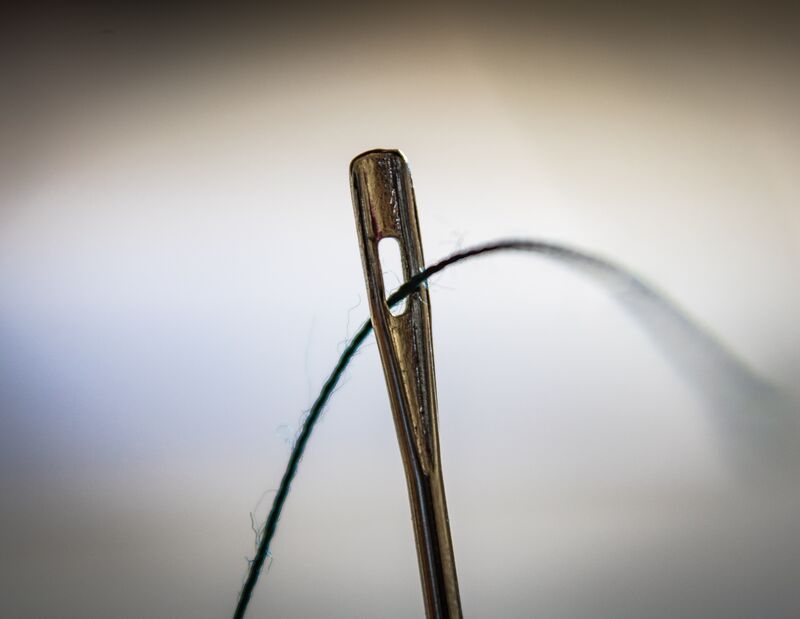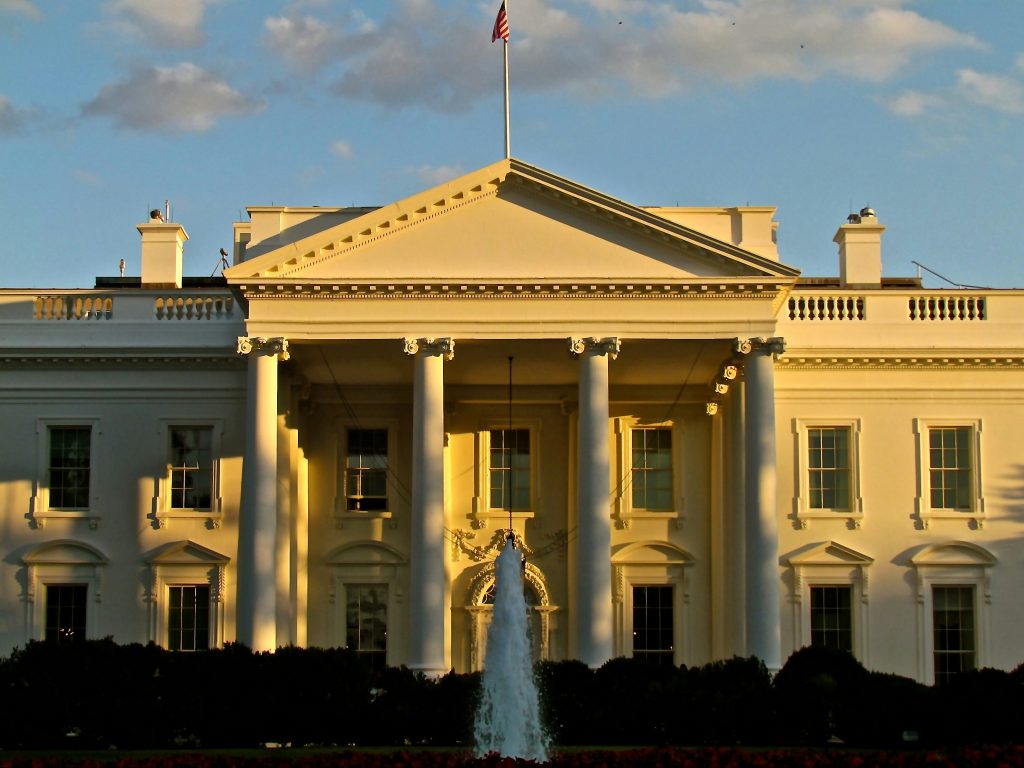What’s the “Sitch” On “Stitch”? Jury Says TikTok Did Not Violate the Lanham Act with Their “Stitch” Editing Feature

By Elizabeth J. Porter*
The seven-day trial over whether TikTok owes $116 million for trademark infringement concluded on Thursday, March 9 and the jury returned a verdict in defendant TikTok’s favor.[1] The question before the jury was whether TikTok’s use of the word “Stitch” in conjunction with a video editing feature on the social media platform infringes on the mark “Stitch Editing” owned by a boutique video editing house.[2]
TikTok started marketing an editing feature in 2020 that allows users to splice the first few seconds of other videos onto the beginning of their own videos, which they called “Stitch.”[3] The app automatically includes “#stitch” with every video posted using the feature.
Stitch Editing Ltd. filed suit against TikTok Inc. and its China-based parent company, ByteDance Ltd., alleging that TikTok marketed its program using a font “that mimics the same way the Stitch mark is used in the marketplace.”[4] Stitch Editing has had a registered trademark on the phrase “Stitch Editing” since 2015, according to the U.S. Patent and Trademark Office (“USPTO”).[5] The registration covers editing of “music, television programs, films, commercials, internet videos, and video programs.”[6] While Stitch Editing never registered a trademark for the word “Stitch” alone, it asserts common law rights because it is often referred to by the one word and has been using it commercially.[7]
Throughout the complaint, Stitch Editing refers to itself as simply “Stitch”, further bolstering its common law claims to the word.[8] It also pointed to evidence of use of the word “Stitch” on its websites,[9] in credits, and on social media. Specifically, in a music video it edited featuring Beyonce, which has over 400 million views on YouTube, the company is credited as “Stitch.”[10]
TikTok argued that the word “Stitch” is generic in connection with video editing and thus is not protectable under trademark law.[11]
The lawsuit demands an injunction against TikTok using the term “Stitch” as well as compensation for corrective advertising, punitive damages, and reasonable royalties. The parties failed to settle, and the trial started on March 1, 2023.[12]
On cross examination, the CEO of Stitch Editing admitted that none of his clientele were actually confused about the company’s association with TikTok and that it hadn’t lost out on jobs to TikTok.[13] However, Stitch Editing had two experts who testified to finding significant confusion among customers about whether the companies were affiliated. One expert surveyed likely direct purchasers of Stitch Editing’s services—advertising and marketing professionals—and found a net confusion of 32.2 percent. The other expert focused on relevant non-purchasing consumers who watch short online videos and found a net confusion rate of 23.5 percent. The experts testified that the generally accepted minimum threshold for confusion is fifteen percent and thus, their findings support a jury finding of likelihood of confusion.[14]
TikTok rebutted this survey evidence with its own expert. Professor Itamar Simonson of Stanford University testified that only 1.3 percent of respondents thought there was a connection between the two companies. Simonson said his survey was much more reliable than those presented by the plaintiffs’ experts because those experts had respondents do a matching game which led them to make assumptions while Simonson’s survey allowed respondents to answer with their own words and ostensibly allowed less room for error.[15]
Simonson further disagreed with the plaintiffs’ application of the survey results and offered the following critique: “They said that anything under 15% confusion indicates lack of confusion. I tend to not accept that particular threshold because I believe that is determined by the so-called trier of fact, which is not me. But clearly the 1.3% is well below the 15% that [Stitch Editing’s experts] considered.”[16]
The jury agreed seemingly agreed with Simonson and returned a verdict in favor of TikTok.[17]
This case highlights the importance of protecting intellectual property rights, particularly trademarks. A trademark is a word, phrase, symbol, or design that identifies and distinguishes the source of the goods or services of one party from those of others.[18] Trademarks are crucial to building brand recognition and consumer loyalty, and they can be valuable assets for businesses.
To establish federal common law trademark rights in the United States, a business or individual must show that they have been using a particular mark in commerce to distinguish their goods or services from competitors.[19] While federal registration with the USPTO is not required to establish trademark rights, it can provide significant benefits, such as a presumption of validity and nationwide priority.[20]
The ultimate question that the jury had to decide is whether the marks are confusingly similar. Stitch Editing had the burden of proving that TikTok’s use of the word “stitch” is likely to cause confusion, mistake, and deception as to the origin, sponsorship, or approval of its products or commercial activities.[21] There is not a requirement to prove actual confusion, though it is beneficial if plaintiffs present evidence of actual confusion.[22]
This is not the first time that a social media platform has been accused of trademark infringement when rolling out a new feature. In 2020, the cable network Reelz filed a lawsuit against Instagram alleging trademark infringement over the use of the word “reels.”[23]
Though the jury did not find liability here, both this case and the Instagram case facially appear to be close calls. One can assume that both TikTok and Meta (Instagram’s parent company) have sophisticated counsel who would run a trademark search before rolling out a new product or feature. The question is, did the companies hold a good faith belief that the marks and services were sufficiently distinct to not generate a likelihood of confusion, or did they simply move forward feeling secure in their ability to defend a lawsuit? Either way, this small trend of brands battling over trademark use online has interesting implications for the future of trademark law and branding.
* J.D. Candidate, Class of 2024, Sandra Day O’Connor College of Law at Arizona State University.
[1] Craig Clough, Jury Clears TikTok in $116M TM Suit over ‘Stitch’ Edit Feature, LAW360 (Mar. 9, 2023, 4:57 PM EST), https://www.law360.com/articles/1584318?e_id=98d07013-f314-4843-af37-24e1d232b7d6&utm_source=engagement-alerts&utm_medium=email&utm_campaign=case_updates.
[2] Craig Clough, TikTok Owes over $116M For Stealing ‘Stitch’ TM, Jury Told, LAW360 (Mar. 1, 2023, 11:10 PM EST), https://www.law360.com/ip/articles/1581479/tiktok-owes-over-116m-for-stealing-stitch-tm-jury-told.
[3] Press Release, TikTok, New on TikTok: Introducing Stitch (Sep. 3, 2020), https://newsroom.tiktok.com/en-us/new-on-tiktok-introducing-stitch.
[4] Clough, supra note 2.
[5] STITCH EDITING, Registration No. 4742447.
[6] Id.
[7] Clough, supra note 2.
[8] Complaint at 20, Stitch Editing Ltd. v. TikTok, Inc., 21-cv-00626-CAB-BGS (S.D. Cal. Apr. 12, 2021).
[9] See STITCH EDITING, supra note 5.
[10] See Naughty Boy, Naughty Boy ft. Beyonce, Arrow Benjamin – Runnin’ (Lose it All) [Official Video], YOUTUBE (Sept. 17, 2015), https://www.youtube.com/watch?v=eJSik6ejkr0 (credits for Stitch Editing’s involvement say “Editor: Leo King @ Stitch”).
[11] Clough, supra note 1.
[12] Clough, supra note 2.
[13] Gina Kim, TikTok Feature Didn’t Confuse Stitch Clients, Jury Hears, LAW 360 (Mar. 2, 2023, 11:04 PM EST), https://www.law360.com/articles/1581885?e_id=138756ed-abd6-44a7-93c3-52effb4d21f3&utm_source=engagement-alerts&utm_medium=email&utm_campaign=case _updates.
[14] Craig Clough, TikTok Jury Hears Surveys Found Confusion Over Stitch TM, LAW360 (Mar. 3, 2023, 10:50 PM EST), https://www.law360.com/articles/1582399?scroll=1&related=1.
[15] Craig Clough, TikTok Expert’s Survey Finds No Confusion with Stitch Editing, LAW360 (Mar. 7, 2023, 10:30 PM EST), https://www.law360.com/articles/1583311?e_id=8a2268d5-0444-4d0b-bd9c-bc9b437f2189&utm_source=engagement-alerts&utm_medium=email&utm_campaign=case_updates.
[16] Id.
[17] Clough, supra note 1.
[18] 1 J. Thomas McCarthy, McCarthy on Trademarks and Unfair Competition § 3:1 (5th ed. 2022).
[19] 2 J. Thomas McCarthy, McCarthy on Trademarks and Unfair Competition § 16:1 (5th ed. 2022).
[20] 6 J. Thomas McCarthy, McCarthy on Trademarks and Unfair Competition § 32:134 (5th ed. 2022).
[21] 15 U.S.C. § 1114.
[22] 4 J. Thomas McCarthy, McCarthy on Trademarks and Unfair Competition § 23:12 (5th ed. 2022).
[23] Bill Donahue, Instagram Says Nobody Will Confuse ‘Reels’ for ‘Reelz,’ LAW360 (Nov. 23, 2020, 5:54 PM EST), https://www.law360.com/articles/1331277?scroll=1&related=1.


